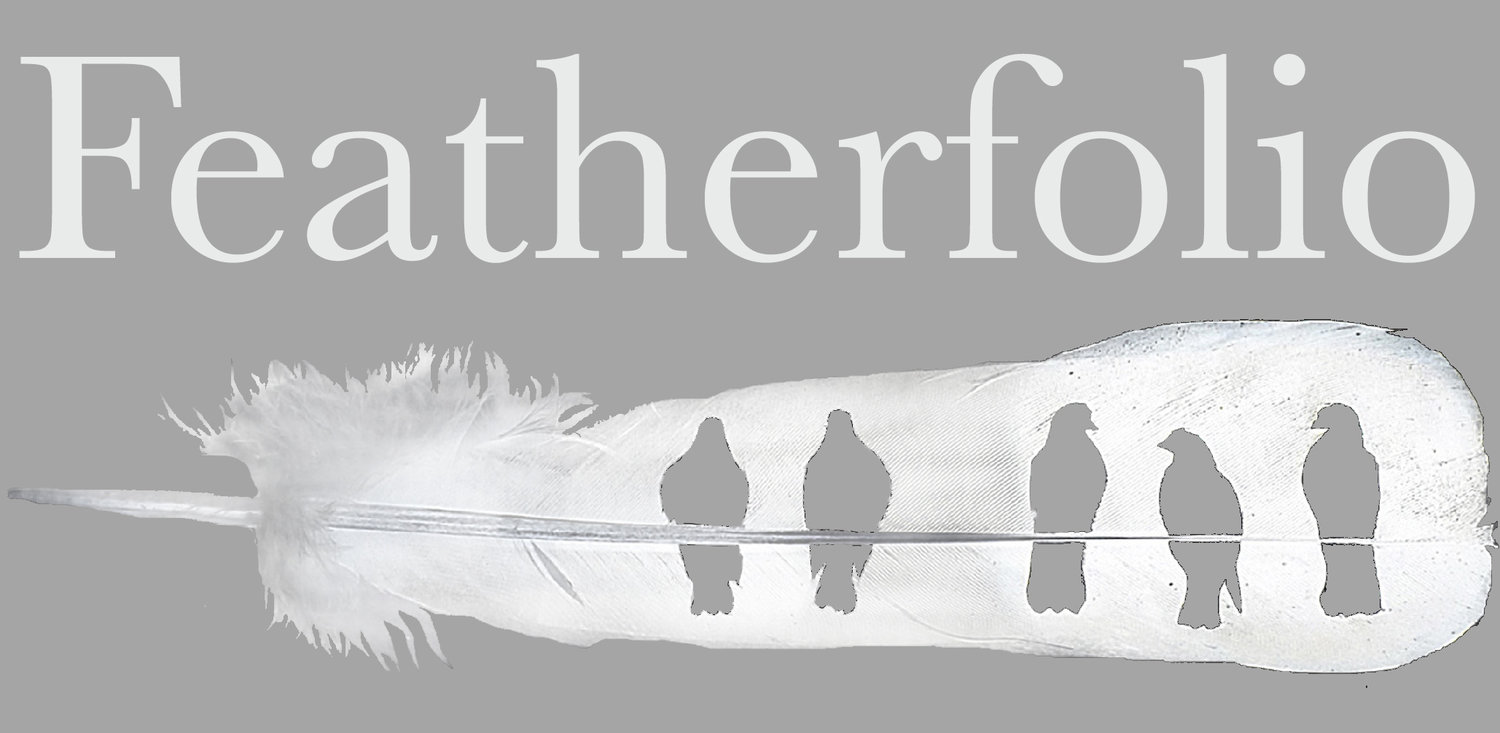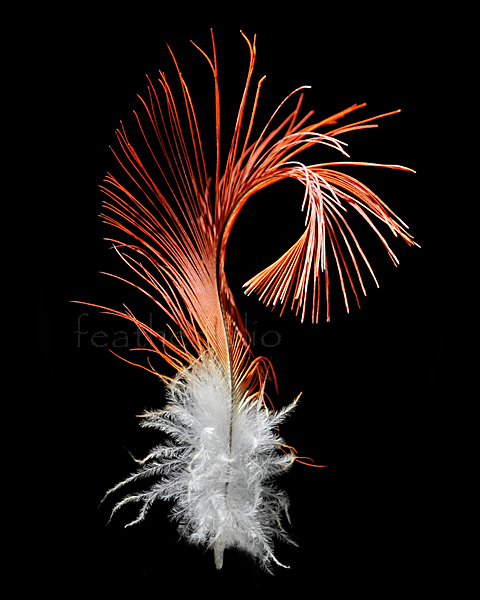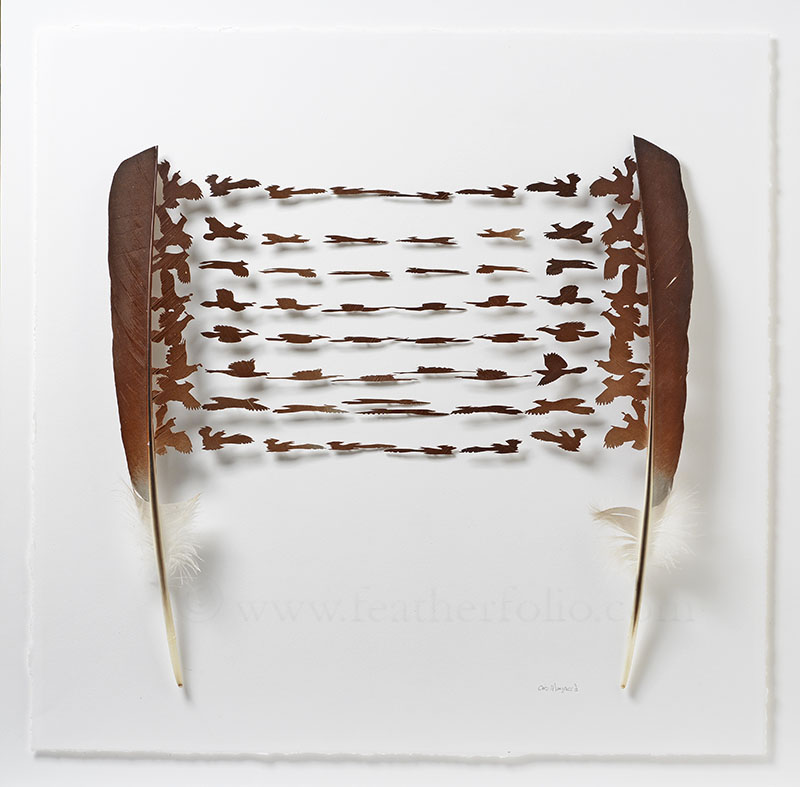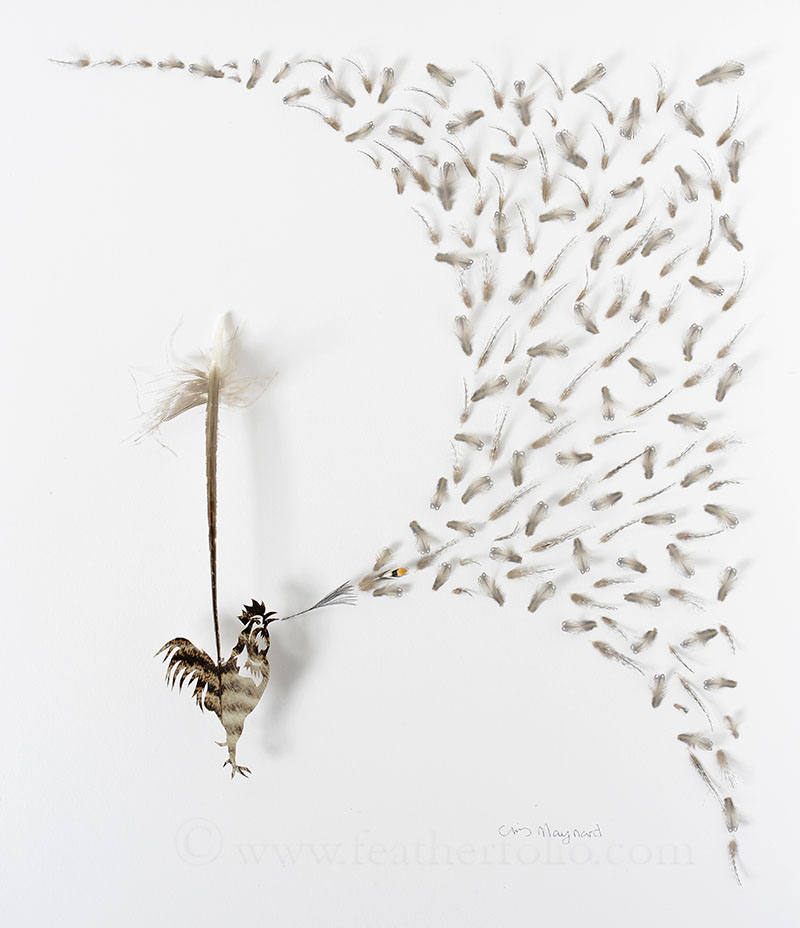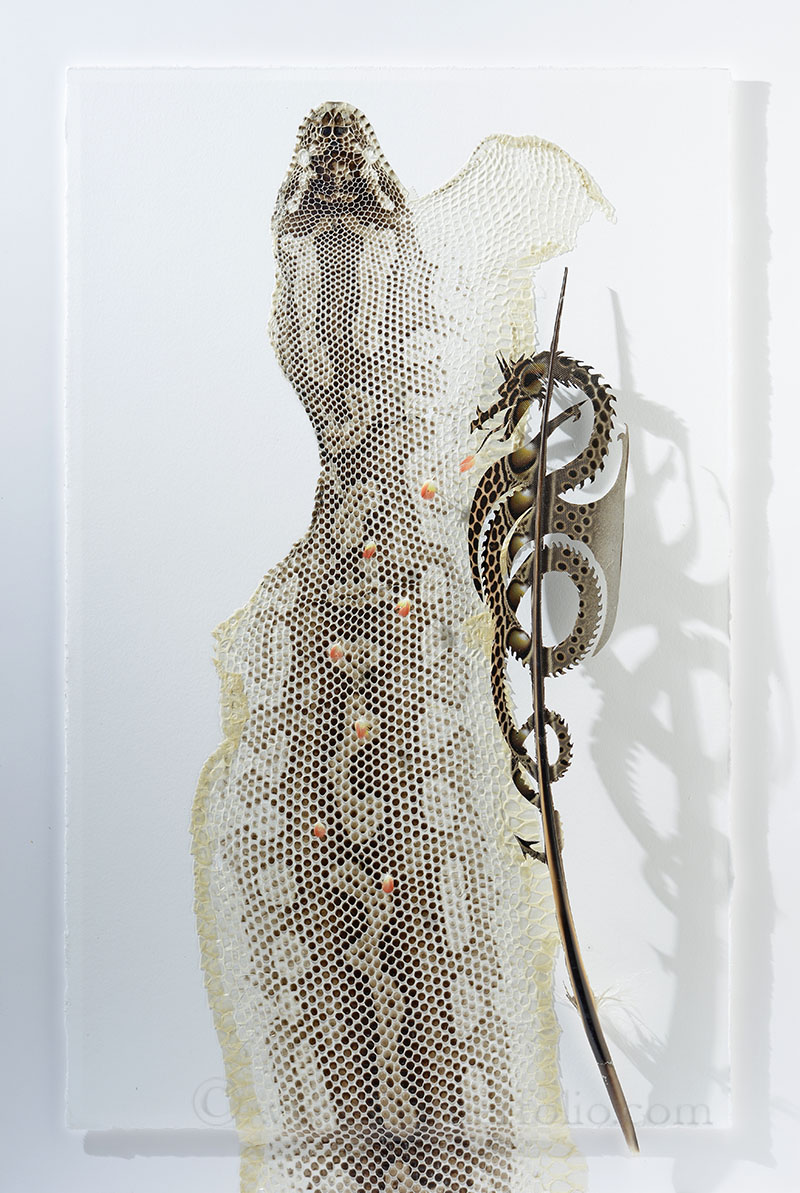Eyes, 14" x 11", 2016, Chris Maynard, malay peacock pheasant tail feathers
Eyes--sight is important to birds, even more than it is to us. For one, birds often see color and distances better than we do. Everyone knows we don’t see as well as owls at night.
Colors are also important to birds as mate attractors. So it makes sense that nature has combined eyes and mate attracting colors into beautiful (even to us) feathers. The reflective tail feathers colors of a peacock and, as pictured here, a peacock pheasant are called eyes. As a woman or man makes eyes at us to attract, these birds do the same but with their tail feathers.
But it wasn't mate attraction that led to me making this piece. Seeing iridescent shiny eyes in the woods inspired me. With a strong headlamp, I biked down five miles of logging road at night. Several times, spooky green eyes stared back at me and then broke off amidst crashing in the brush. They were deer eyes, a close match to the color in these feathers. Then a pair of red eyes stared out. Stopping and on close inspection, it was a small owl sitting on a low branch.
